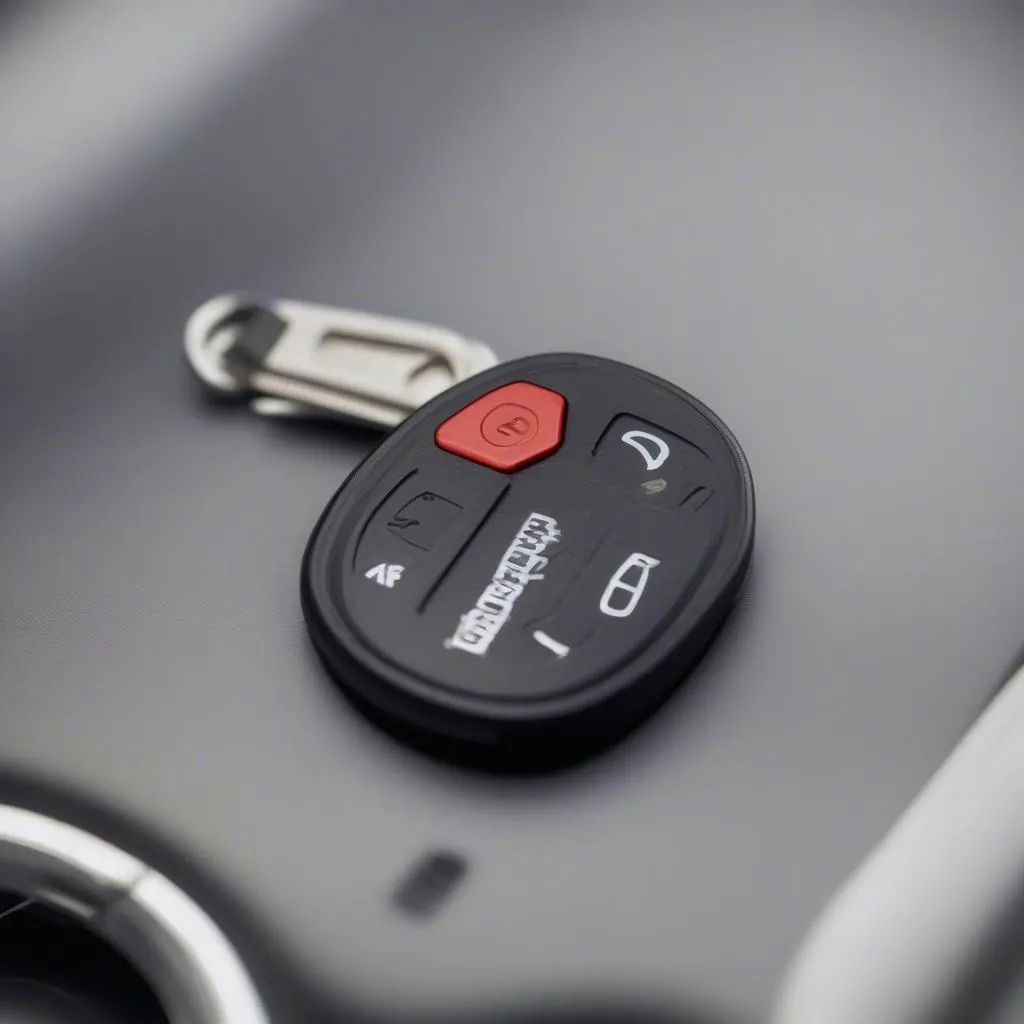Dealing with a stubborn anti-theft system in your car can be incredibly frustrating. Whether it’s a malfunctioning key fob, a faulty immobilizer, or a glitching alarm system, these issues can leave you stranded and looking for answers. This guide will provide you with practical insights into how to bypass anti-theft systems, identify common problems, and offer potential solutions.
Understanding the Frustration of Anti-Theft Systems
Anti-theft systems are crucial for protecting your vehicle, but when they malfunction, they can create a major headache. Imagine being in a hurry only to find your car refusing to start because it doesn’t recognize your key. Or, worse yet, picture your car alarm blaring in the middle of the night for no apparent reason. These situations highlight the potential downsides of an overly sensitive or malfunctioning anti-theft system.
Common Causes of Anti-Theft System Issues
Before we dive into solutions, it’s important to identify what might be triggering the problem. Here are some common culprits:
- Dead Key Fob Battery: A dead battery in your key fob is often the simplest explanation for why your car’s anti-theft system won’t disarm.
- Weak Car Battery: A low car battery can disrupt the communication between your key fob and the vehicle’s immobilizer system.
- Faulty Key Fob: Beyond a dead battery, the key fob itself can malfunction due to damaged circuitry or internal component failure.
- Immobilizer Issues: The immobilizer system, which prevents the engine from starting without the presence of a recognized key, can encounter electrical or programming errors.
- Alarm System Malfunctions: A hypersensitive alarm system might be triggered by minor vibrations or even passing traffic, leading to false alarms.
 Car key fob with battery exposed
Car key fob with battery exposed
Essential Tools for Diagnosing and Addressing Anti-Theft Issues
To effectively tackle anti-theft system problems, having the right tools is essential. These can range from simple items to more advanced diagnostic equipment:
- Voltage Meter: This will help you test your car battery and key fob battery to ensure they have sufficient charge.
- Code Reader: An OBD-II code reader can reveal diagnostic trouble codes (DTCs) stored in your vehicle’s computer, potentially pinpointing the source of the anti-theft issue.
- Programming Tools: In some cases, you may need specialized programming tools to reprogram keys, reset immobilizers, or update the car’s software. These tools are often used by professional automotive locksmiths and mechanics.
Steps to Troubleshoot and Potentially Bypass Anti-Theft Systems
Disclaimer: Attempting to bypass or disable your anti-theft system without proper knowledge can have serious consequences, including potential damage to your vehicle’s electrical system or even legal ramifications. The following steps are provided for informational purposes only and should be approached with caution. If you are uncomfortable with any of these steps, it is strongly recommended that you consult with a qualified automotive professional.
- Check the Basics: Begin by replacing the key fob battery and ensuring your car battery is fully charged. These simple steps often resolve a surprising number of anti-theft issues.
- Inspect the Key Fob: Examine your key fob for any signs of physical damage, such as cracks or loose buttons. If you suspect internal damage, contacting your dealership or an automotive locksmith for a replacement might be necessary.
- Try a Spare Key: If you have a spare key, try using it to start the vehicle. This can help isolate whether the problem lies with the original key or a broader system malfunction.
- Reset the System: Some vehicles have a manual procedure for resetting the anti-theft system. This often involves a combination of key turns, door locks, and ignition cycles. Consult your vehicle’s owner’s manual for specific instructions.
- Consult a Professional: If basic troubleshooting steps fail, seeking help from an experienced automotive locksmith or a mechanic specializing in electronic systems is advisable. They have the expertise and specialized tools to diagnose and address more complex anti-theft system problems.
 Mechanic using a diagnostic scanner on a car
Mechanic using a diagnostic scanner on a car
FAQs About Anti-Theft Systems and Troubleshooting
Q: Can I disable the anti-theft system in my car myself?
A: While it’s technically possible to tamper with or disable some anti-theft components, it’s highly discouraged. Doing so can void your warranty, potentially damage your vehicle’s electrical system, and may even be illegal in some areas.
Q: My car won’t start, and the dashboard is flashing a security light. What does this mean?
A: A flashing security light is a clear indication that your anti-theft system has been activated and is preventing the engine from starting. This usually means the system isn’t recognizing your key.
Q: How much does it cost to fix an anti-theft system problem?
A: The cost can vary widely depending on the nature of the problem, the make and model of your vehicle, and labor rates in your area. It could be as inexpensive as a new key fob battery or as involved as replacing the entire immobilizer system.
Q: Are aftermarket anti-theft devices compatible with my car’s factory system?
A: Compatibility varies widely. It’s crucial to consult with a qualified professional when considering aftermarket anti-theft devices to ensure they integrate seamlessly with your car’s existing system and don’t create conflicts.
For those interested in learning more about advanced automotive diagnostics and troubleshooting, Cardiagtech offers a range of resources and tools to empower car owners and professionals alike. Check out their website here for informative articles, product reviews, and insights into the world of car diagnostics. If you are struggling to open your Avast anti theft in stealth mode, we have a comprehensive guide available here, or if you want to learn more about the removal of anti-theft devices, we have an article on that here. Cardiagtech also offers a guide on how to remove anti-theft in a Lexus 2007 ES350.
Final Thoughts
Navigating anti-theft system problems can be challenging, but by understanding common causes, using the right tools, and following these troubleshooting steps, you can increase your chances of resolving the issue or knowing when to seek professional assistance. Remember, patience and a methodical approach go a long way when dealing with these often-complex automotive systems.

